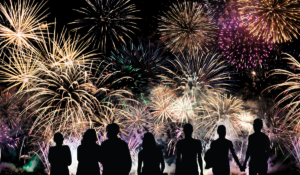With the July 4th holiday upon us, the air is filled with excitement (and fireworks!) as preparations for fireworks displays and pyrotechnic shows get underway.
But, while these celebrations bring joy to millions, it’s crucial to prioritize the safety of workers in the fireworks and pyrotechnics industry.
When dealing with products as inherently dangerous as fireworks, accidents can all-to-quickly become deadly. For instance, one Florida-based entertainment company now faces the dire consequences of such negligence.
In December of 2022, a devastating fire and explosion at a fireworks warehouse in Orlando, Florida resulted in the loss of four lives, along with critical injuries to a fifth worker. Following an OSHA investigation, the company now faces more than $109K in fines.
The investigation revealed that an ignition source started a series of fires and explosions while a team of workers prepared fireworks for an event.
This unfortunate event serves as a somber reminder of the importance of adhering to strict safety protocols, and the dire results that can arise when safety is compromised.
To prevent an event like this from happening again, let’s look at seven important ways to keep workers in the pyrotechnics industry safe this holiday.
Let’s break it down.
Related Article: Overcoming the Dangers of Firefighting
Related Article: 5 Key Steps to Workplace Emergency Preparedness

1. Comprehensive Training Programs
One of the fundamental steps in ensuring worker safety in any industry is providing comprehensive training programs.
Employers must invest in training sessions that cover all aspects of the job, including the proper handling and storage of fireworks, understanding potential hazards, and emergency response protocols. Training should be conducted regularly and tailored to address the specific needs of each worker.
- See OSHA guidelines on the sale of consumer fireworks.
- See OSHA guidelines for outdoor fireworks display.
- See OSHA video on Fireworks Safety in Manufacturing and Retail Sales.
2. Language-Accessible Training
It’s crucial to provide training in a language that workers understand fluently.
Many workers in the fireworks and pyrotechnics industry come from diverse backgrounds and may have limited English proficiency. By offering training materials and sessions in multiple languages, you can effectively communicate critical safety information to all employees.
See OSHA multi-language posters [by type].
See OSHA multi-language posters [by topic].
3. Adequate Personal Protective Equipment [PPE]
Proper personal protective equipment [PPE] are essential tools for worker safety in the fireworks and pyrotechnics industry.
Employers must provide and enforce the use of appropriate PPE, including fire-resistant clothing, safety goggles, gloves, and ear protection. Regular inspections and maintenance of PPE should also be conducted to ensure its effectiveness.
4. Regular Equipment Inspections
Regular inspections of equipment, machinery, and storage areas are crucial for identifying potential safety hazards. Employers should establish a comprehensive inspection schedule and ensure that it is diligently followed.
Promptly repair or replace any damaged or malfunctioning equipment to minimize the risk of accidents.
5. Controlled Access and Restricted Zones
Establishing controlled access areas and restricted zones is essential to prevent unauthorized personnel from entering hazardous areas.
Clear signage, barriers, and designated entry points should be implemented to control access to areas where fireworks are stored, handled, or prepared. Only trained and authorized personnel should be allowed in these areas.
6. Strict Adherence to Safety Protocols
Safe workplace protocols should be strictly enforced at all times.
Employers must emphasize the importance of following established safety procedures and ensure that workers understand and adhere to them.
This includes protocols for handling, transporting, and storing fireworks, as well as guidelines for setting up and executing pyrotechnic displays.
7. Regular Safety Meetings and Communication
Regular safety meetings and open lines of communication are vital for maintaining a safe working environment.
Make sure you conduct frequent safety meetings to address any concerns, provide updates on safety practices, and encourage workers to share their experiences and suggestions. Creating a culture of open communication fosters a proactive approach to safety and encourages workers to actively participate in identifying potential hazards.
Bringing It Together
As we celebrate Independence Day and enjoy the breathtaking displays of fireworks, never forget the well-being of the workers who make these spectacles possible.
By implementing these seven important safety measures – comprehensive training, language-accessible programs, adequate PPE, regular equipment inspections, controlled access areas, strict adherence to safety protocols, and regular safety meetings – employers can create a safer environment for workers in the fireworks and pyrotechnics industry.
Together, let’s ensure that this July 4th is a day of celebration, joy, and above all, safety for all those involved.
***
About Worksite Medical
In most cases, OSHA requires medical surveillance testing, and at no cost to employees.
Worksite Medical makes that program easier with mobile medical testing.
We conduct on-site respirator fit tests, as well as audiometric exams, pulmonary function tests and heavy metal lab work, right on your job site. We also keep accurate, easy-to-access medical records for your convenience. You’ll keep your employees at work, and stay ahead of OSHA inspections.




